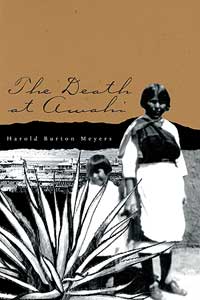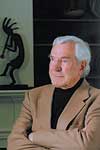Research/Academic Showcase
Campus Connection
Diversity Program Shapes Tomorrow's Leaders
Alumni Highlights
Alumni Association Hosts "A Matador Evening"
2007 Top Techsan Nominations Now Being Accepted
Administration
Finalist Declared for HSC Presidency
Board of Regents Officers Announced
Gov. Perry Appoints Four New Members to Texas Tech University System Board of Regents
Athletics
Hall of Honor Inductees Announced
Development
Business Receives an "Energy" Boost
Book Review
Helpful Links
Culture Clash in the Old West
A new book takes a fictional approach to a controversial time in American Indian history.
Written by Sally Logue Post

The controversy over the U.S. Bureau of Indian Affairs 1920s-era policy of “Christianize and civilize” American Indian children is the centerpiece of a new book by former Time correspondent and Fortune editor Harold Burton Meyers.
“The Death at Awahi,” published by Texas Tech University Press, takes the reader to the fictional New Mexico pueblo of Awahi in 1923. The school’s principal has been caught sending government property to a missionary. The Indian Service seeks to quell a Congressional uproar by giving the principal’s job to Quill Thompson, a critic of “Christianize and civilize.”
The Awahi pueblo is an isolated, dangerous place. The tribe has managed for centuries to keep their rich culture intact, despite assaults by Spanish conquistadors, missionaries, the Indian Service and a teacher who might have had the principal’s job if she were not a woman.

When a white man is found dead, Quill’s already difficult job is made more treacherous. Quill faces the question of whether to let the Awahi deliver their own type of justice or call in outside forces that could destroy the ancient society.
“The Death at Awahi” is the third book by Meyers set in the Southwest. Meyers grew up on Pima-Maricopa, Zuni, Navajo and Hopi reservations in Arizona and New Mexico.
For more information or to purchase the book, visit the Texas Tech University Press Web site.